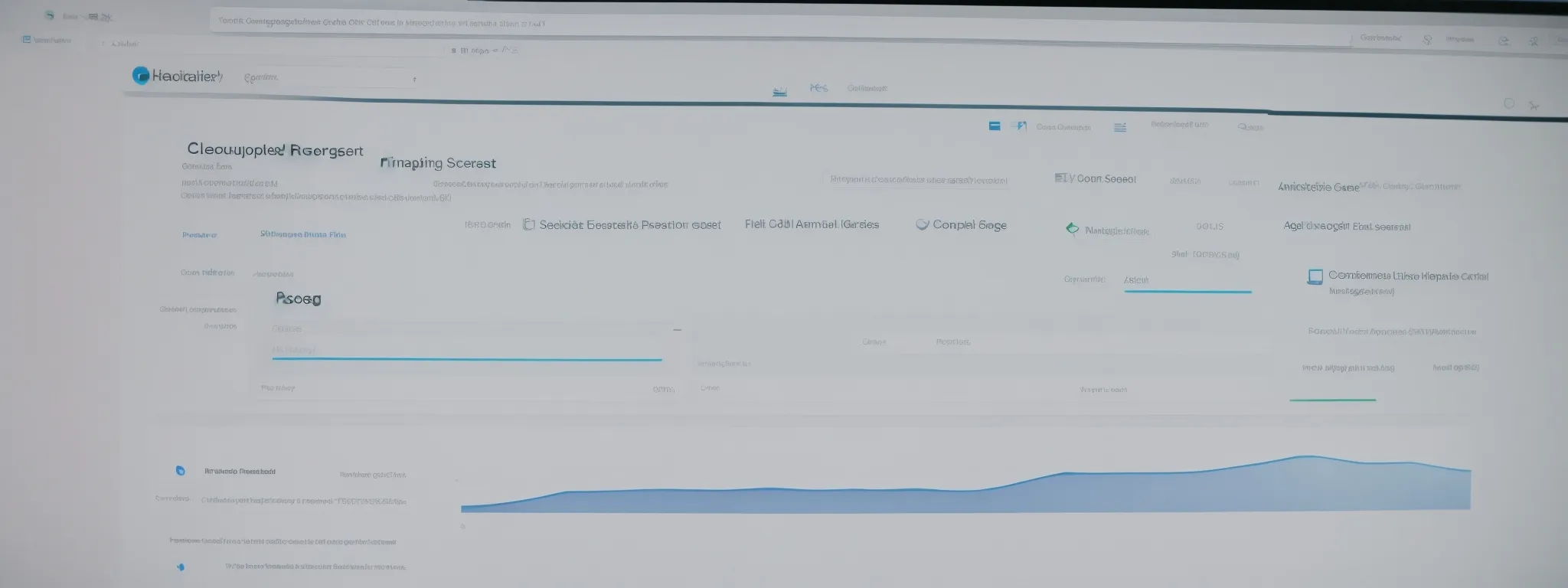Guarding Your Reputation: A Deep Dive into Tools to Monitor Your Online Presence
Essential Strategies for Protecting Your Digital Footprint: Expert Insights on Reputation Management Tools In today’s digital era, your online presence is as tangible as your physical one, […]
Essential Strategies for Protecting Your Digital Footprint: Expert Insights on Reputation Management Tools
In today’s digital era, your online presence is as tangible as your physical one, leaving a digital footprint that can have long-lasting consequences.
Navigating the complexities of online reputation requires strategic use of digital tools designed to monitor and enhance how you’re perceived by others.
With the right approach, organizations can transform potential vulnerabilities into robust pillars of credibility and trust.
Employing a suite of reputation management tools is crucial in this ever-evolving digital landscape to ensure that your brand’s integrity remains unblemished.
Keep reading to uncover the strategies experts employ to safeguard and improve their digital presence.
Key Takeaways
- Vigilant Reputation Management Is Essential in Safeguarding a Brand’s Digital Persona
- Advanced Reputation Management Tools Provide Actionable Insights and Real-Time Data
- Social Media Monitoring and Engagement Are Key to Proactive Online Reputation Control
- Strategic SEO Tactics Can Help Manage and Improve a Brand’s Online Reputation
- Regular Digital Footprint Audits Are Crucial for Crafting Effective Reputation Management Strategies
Understanding the Need for Digital Footprint Management

In today’s interconnected online ecosystem, a well-maintained digital footprint is not merely an asset; it is a necessity.
With the unrelenting expansion of the internet into every facet of personal and commercial life, the impact of an unguarded digital presence can be profound, swiftly altering public perception and the long-term viability of a brand.
Recognizing the risks associated with online exposure is pivotal, for both individuals and organizations, emphasizing the need for vigilant reputation management and the implementation of robust tools designed to safeguard a digital persona from potential threats and malign influences.
Assessing the Impact of an Unguarded Digital Presence
An unshielded digital presence can have an immediate and lasting effect on how a brand is perceived. When companies neglect the Digital Landscape, they leave themselves vulnerable to unchecked narratives, which can rapidly disseminate across platforms, causing significant damage to reputation and trust.
The consequences of not actively managing one’s online presence can reverberate beyond mere public perception. It often results in tangible financial setbacks, as consumer loyalty wavers and they gravitate towards competitors who display a more polished, considerate digital demeanor.
Recognizing the Risks to Personal and Brand Reputation
In the age of information proliferation, personal and brand reputations are subject to the whims of online narratives. Neglecting the power of digital conversations can turn the tide unfavorably, making reputation management not just prudent, but paramount for enduring success.
Organizations and individuals alike confront the challenge of maintaining a positive digital image amidst the vast seas of social chatter. A lapse in digital vigilance could cascade into adverse outcomes, where brand equity is eroded by negative sentiment gone viral, underscoring the urgency of Employing Sophisticated Reputation Management Tools.

In the digital age, safeguarding one’s online presence is a complex task that requires a strategic approach, including the selection of apt tools and platforms.
As the market burgeons with an array of reputation management solutions, businesses must diligently compare key features to identify the ones that align with their unique reputation objectives.
Choosing the right mix of technology demands an understanding that goes beyond superficial metrics; it calls for an in-depth analysis of how each tool can weave into the fabric of an organization’s digital PR efforts and contribute to the overarching goal of sustaining a pristine online image.
Comparing Key Features of Leading Reputation Management Platforms
When assessing online reputation management platforms, a critical component distinguishing the leaders in the field is their ability to deliver actionable insights while streamlining the Monitoring Process. The premier systems offer comprehensive dashboards that display real-time data, fostering prompt responses to emerging reputation threats.
Additionally, the efficacy of a reputation management platform is often gauged by its integrative capabilities, which allow for seamless synchronization with existing marketing tools. This synchronization bolsters an organization’s ability to maintain a cohesive narrative across all digital touchpoints:
| Platform Feature | Description | Benefit |
|---|---|---|
| Real-Time Monitoring | Continuous tracking of online mentions and sentiment | Enables immediate response to manage potential issues |
| Data Integration | Compatibility with other digital marketing tools | Creates a unified approach to online reputation management |
Matching Tools to Your Specific Reputation Goals
Optimal management of a digital footprint hinges on aligning the chosen reputation management tools with the specific aims and challenges an entity faces online. It is imperative for a brand to identify and employ a suite of instruments tailored to bolster its unique narrative, counteract adverse content, and promote positive messaging.
Investment in a sophisticated ecosystem of reputation management solutions that synergize with an organization’s broader digital strategy is a strategic imperative. The subtleties of each tool’s capacity to parse through data, influence search engine perception, and Steer Public Dialogue are what will ultimately fortify a brand against the complexities of the digital domain.
How to Set Up Alerts for Brand Monitoring

As businesses strive to fortify their online presence, setting up meticulous brand monitoring is a critical step towards preemptive reputation defense.
These methods enable organizations to swiftly detect and address content that could impact their brand image, allowing them to maintain control of the conversation surrounding their name in the digital expanse.
Configuring Google Alerts offers an entry point for immediate notifications on brand mentions, while advanced alert systems provide a more rounded, in-depth analysis and surveillance for comprehensive brand protection.
Configuring Google Alerts for Immediate Updates
To initiate early detection of brand mentions, configuring Google Alerts stands out as a swift and effective method. By entering brand-specific keywords, professionals can receive real-time notifications whenever their brand is mentioned across the web, thus empowering them to act quickly in the management and curation of their online narrative.
Professionals utilize Google Alerts not solely as a reactive measure but also as a strategic facet of their proactive digital public relations toolkit. This tool affords them the luxury of being one of the first responders to unfolding conversations, directly influencing the trajectory of public discourse and protecting the brand’s integrity.
Utilizing Advanced Alert Systems for Comprehensive Coverage
The implementation of advanced alert systems transcends basic brand monitoring, providing an extensive net that captures a broader spectrum of online interactions. Such systems are designed to delve into the granular details of consumer conversations and media mentions, ensuring a vaster, yet precise, coverage to protect a brand’s digital footprint.
By embracing these advanced systems, professionals gain the advantage of nuanced insights, allowing for a more strategic response to online engagement. The proactive utilization of these alert systems becomes an indispensable part of a comprehensive Online Reputation Management Strategy, equipping brands with the tools to navigate the tumultuous waters of public perception.
| Tool Aspect | Advantage | Strategic Benefit |
|---|---|---|
| Granular Data Collection | Acquisition of detailed conversation metrics | Facilitates a targeted approach towards engagement and intervention |
| Proactive Alert Capabilities | Real-time notifications on specific keywords and sentiment | Promotes swift response to nurture positive brand associations and mitigate risks |
Leveraging Social Media Monitoring for Reputation Control

In an era where social media platforms are intertwined with the public’s daily discourse, effectively harnessing these channels is vital for maintaining control over your brand’s reputation.
The ability to immediately detect and engage with brand mentions on these networks can be the difference between a managed response and a full-blown crisis.
Selecting the most efficient tools for real-time social listening and crafting adept response strategies serve as the bedrock of proactive reputation management.
These steps provide organizations with the agility to uphold a positive brand image actively and protect against unfounded negativity in the ever-evolving digital landscape.
Identifying the Best Social Media Tools for Real-Time Tracking
Efficient Social Media Monitoring hinges on selecting tools that excel in providing comprehensive, real-time tracking of brand mentions and conversations. Organizations keen on maintaining a robust online reputation turn to cutting-edge platforms that offer in-depth analytics and immediate alerts, key for navigating the rapidly shifting sentiments on social media.
The adoption of these advanced monitoring systems enables brands to detect nuanced discussions and emerging trends, granting them the capability to respond promptly and effectively. In doing so, they ensure a proactive stance in reputation management, preserving brand integrity and fostering positive engagement with their audience.
Crafting Strategies to Respond to Social Media Mentions
In the realm of social media, the promptness of a brand’s response to mentions can significantly influence public sentiment. The formulation of response strategies should prioritize clarity, empathy, and alignment with brand values, ensuring that each interaction reinforces the brand’s image and messaging goals.
Adept response strategies demand a nuanced understanding of the platform-specific nuances and user expectations. Brands must navigate these digital spaces with finesse, offering resolutions or acknowledgments that resonate with their audience while also contributing to the narrative in an authentic and meaningful way.
The Role of SEO in Managing Your Online Reputation

In the digital theater where public perception is often shaped by search engine results, mastering the art of search engine optimization (SEO) becomes a keystone in managing an organization’s online reputation.
With strategic SEO practices, businesses have the power to influence the narrative by either elevating positive content or mitigating the visibility of disparaging materials.
By applying targeted SEO tactics, companies can craft and maintain a digital footprint that reflects their brand ethos and values, all while leveraging the intricacies of search algorithms to foster a favorable public image.
Applying SEO Tactics to Suppress Negative Content
In the high-stakes realm of online reputation management, the application of search engine optimization tactics can effectively diminish the visibility of negative content. When proscribed information surfaces on search engines, strategically crafted SEO initiatives can promote positive or neutral content, which then displaces less favorable links.
| SEO Tactic | Application | Outcome |
|---|---|---|
| Content Creation and Optimization | Developing authoritative, SEO-friendly content that outperforms negative material | Pushes down negative listings in search results |
| Backlink Profile Strengthening | Amassing high-quality backlinks to enhance the ranking of positive content | Increases the domain authority of favorable pages |
Understanding that search engines prioritize relevance and authoritativeness, organizations can leverage such metrics to assert control over their online narratives. By inoculating their digital landscape with robust SEO practices, businesses ensure their brand messaging remains resilient against the potential erosion caused by negative online content.
Using SEO to Promote Positive Digital Footprints
Through meticulous SEO strategies, organizations can sculpt a digital persona that captures the essence of their brand, embracing the power of search engines to exhibit a refined, authoritative image. Crafting an impactful online presence revolves around the strategic placement of relevant keywords, the creation of high-quality content, and the meticulous optimization of meta tags and descriptions, ensuring that a brand’s most favorable aspects dominate search engine results pages.
The prowess of a well-executed SEO campaign lies in its ability to rally the algorithms to a brand’s favor, consequently prioritizing the desired portrayal of the company. By reinforcing their digital spaces with rich, engaging content that echoes core values, businesses can create an indelible online footprint, one that reflects their commitment to excellence and drowns out the digital noise of competitors and detractors alike.
Regular Audits: Key to Keeping Your Digital Footprint Secure

Conducting regular audits on one’s digital footprint represents an integral component of any astute reputation management strategy.
Far beyond a perfunctory check, this process necessitates a detailed review of online assets, assessing everything from social media profiles to search engine rankings, to uncover the extent of a brand’s digital exposure.
This nuanced examination unveils the current state of an organization’s online presence, serving as a foundation for crafting robust strategies that reinforce reputational strength and counteract vulnerabilities.
The subsequent sections offer a step-by-step guide to conducting digital footprint audits and elucidate how businesses can translate audit insights into actionable reputation strategies.
Step-by-Step Guide to Conducting Digital Footprint Audits
Initiating a Digital Footprint Audit begins with a meticulous inspection of a brand’s online presence, starting with a comprehensive search of all content related to the brand across various search engines. This includes not only the company’s own web properties but also mentions in news articles, blog posts, and review sites, allowing for clear visibility into public perception and online prominence.
The next phase involves an analysis of social media engagement and sentiment analysis. Brands scrutinize their social media accounts, noting the tone and nature of interactions, and employ social listening tools to measure the sentiment of mentions beyond their own channels. This thorough approach ensures that the audit captures the entirety of the brand’s online narrative:
| Audit Component | Objective | Action Items |
|---|---|---|
| Search Engine Review | Evaluate online visibility and content impact | Identify all instances of brand mentions and assess the positive or negative implications |
| Social Media Analysis | Understand brand perception and user engagement | Analyze social interactions, track sentiment, and benchmark against competitors |
Turning Audit Insights Into Tangible Reputation Strategies
Turning digital footprint audit findings into actionable strategies is a transformative step that solidifies an organization’s online standing. Addressing vulnerabilities and strength highlighted during the audit places a brand in a proactive stance, ready to implement reputation-enhancing practices with precision and purpose.
Upon dissecting the collected data, priorities emerge, forming the blueprint for reputation management actions: reinforcing positives, addressing negatives, and securing points of potential exposure. These steps ensure the brand narrative remains consistent and reflects the company’s values authentically and compellingly.
| Audit Insight | Strategic Action | Expected Outcome |
|---|---|---|
| Positive Content Amplification | Enhance visibility of favorable content through SEO and content marketing efforts | Boosts brand reputation and mitigates impact of negative content |
| Negative Content Addressal | Engage with dissatisfied voices and rectify service or perception gaps | Improves customer relations and refines brand perception |
| Exposure Minimization | Strengthen security and privacy measures to prevent data leaks and unauthorized access | Reduces risk of reputational harm due to security breaches or misuse of data |
Conclusion
In conclusion, safeguarding one’s digital footprint through proactive reputation management is vital in today’s internet-centric world.
Businesses and individuals must embrace vigilant monitoring and strategic approaches to protect their online personae.
Utilizing real-time alerts, engaging in social media monitoring, employing sophisticated SEO techniques, and conducting regular digital audits are essential strategies to mitigate risks and maintain a positive brand image.
Ignoring these practices can lead to reputation damage with long-lasting implications.
Therefore, it is imperative to employ the right combination of reputation management tools to actively shape and control the narrative surrounding one’s digital presence.














































































